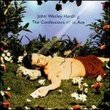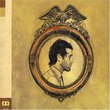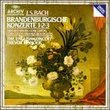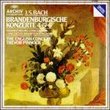| All Artists: Sergey Rachmaninov, Pyotr Il'yich Tchaikovsky, Neville Marriner, Academy of St. Martin-in-the-Fields, Garrick Ohlsson Title: Tchaikovsky & Rachmaninov: Piano Concertos Members Wishing: 0 Total Copies: 0 Label: Hanssler Classics Original Release Date: 1/1/2005 Re-Release Date: 4/22/1997 Genre: Classical Styles: Chamber Music, Forms & Genres, Concertos, Historical Periods, Classical (c.1770-1830), Instruments, Keyboard Number of Discs: 1 SwapaCD Credits: 1 UPCs: 040888893226, 714249893223, 714298932232, 4010276004493 |
Search - Sergey Rachmaninov, Pyotr Il'yich Tchaikovsky, Neville Marriner :: Tchaikovsky & Rachmaninov: Piano Concertos
 | Sergey Rachmaninov, Pyotr Il'yich Tchaikovsky, Neville Marriner Tchaikovsky & Rachmaninov: Piano Concertos Genre: Classical
|
Larger Image |
CD DetailsSimilarly Requested CDs
|
CD ReviewsThe Art of Non-Schmearing Vera Kolb | Kenosha, WI | 10/29/2006 (5 out of 5 stars) "My violin teacher told me not to "schmear" (to schmear: to spread, like margarine on bread; butter does not schmear well) in response to my discovery that fast or complicated music is easier to "schmear" than to play each individual note separately as the composer intended. At the end of my fast schmears my violin teacher used to say: "May I please have a broom so that I can sweep of the floor all the notes that you have dropped".
I have noticed later in life that the schmearing is widespread among the lesser musicians, including the pianists. Here goes the left hand schmearing in the background, while the right hand introduces the emotional peaks and valleys. In between those some more schmearing occurs. Forget these lesser performers! No broom is needed after Mr. Ohlsson's performance. There are no dropped notes and no schmear of any sort in any of the sections no matter how fast or complicated they are. You can clearly hear every individual note. Mr. Ohlsson's phenomenal, laser-precise technique is just the beginning. It is his deep understanding of the music and his ability to get the listeners involved what makes him so special. From the very beginning of this CD you recognize his thunderous style. No note is left behind, as in his musical universe every note counts, and it has its meaning, its color and character. You become hooked immediately, and follow his playing by absorbing every note. Sadly, you realize how much you have missed by listening to the lesser performers, who attached little value to some of the notes, especially those that were connecting the known melodic lines. However, these valueless notes provided you with an emotional rest during the listening. You will get no such rest from Mr. Ohlsson, whose relentless performance will drive you to your emotional limits. Mr. Ohlsson goes to the musical core of Tchaikovsky and Rachmaninov, and does not succumb to producing the anticipated "Russian soul effects". He did the same in performing Chopin, namely going for the musical essence rather than trying to evoke ever-so-popular images of the tuberculosis-ridden Chopin. You can trust Mr. Ohlsson to give you the music straight and not to go for the musical masquerades. You may wish to indulge yourself in a musical comparison by listening to the wonderfully remastered CD (by Deutsche Grammophon) with the same two concerti played by Sviatoslav Richter, his 1959 and 1963 performances. In my case the playing of Mr. Richter went straight into the emotional side of my brain, in which the beloved romantic music of my childhood resides. In contrast, Mr. Ohlsson engages both sides of my brain, the emotional and the rational sides. Mr. Ohlsson's music deeply affects the rational side of my brain, in which it evokes pictures of the musical big bangs, the birth and the life of music, and it renews the respect for the Pythagoreans cosmic views of the musical spheres. I have this great longing to understand what the music is, and what it is all about. The music is now a challenging big mystery. Then the connection between these images and the emotional side of my brain occurs, which gives rise to the musical emotions that are now new and different, and intense at the previously unimagined level. " |

 Track Listings (6) - Disc #1
Track Listings (6) - Disc #1








